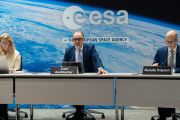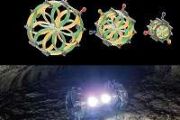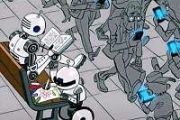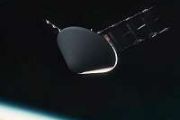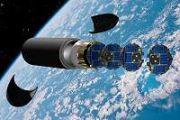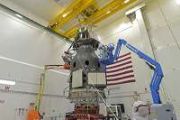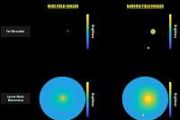
Copernical Team
Testing confirms Webb Telescope on track for targeted Dec 22 Launch
 Engineering teams have completed additional testing confirming NASA's James Webb Space Telescope is ready for flight, and launch preparations are resuming toward Webb's target launch date of Wednesday, Dec. 22, at 7:20 a.m. EST.
Additional testing was conducted this week to ensure the observatory's health following an incident that occurred when the release of a clamp band caused a vibrati
Engineering teams have completed additional testing confirming NASA's James Webb Space Telescope is ready for flight, and launch preparations are resuming toward Webb's target launch date of Wednesday, Dec. 22, at 7:20 a.m. EST.
Additional testing was conducted this week to ensure the observatory's health following an incident that occurred when the release of a clamp band caused a vibrati Alaska scientist reveals cause of lost magnetism at meteorite site
 A University of Alaska Fairbanks scientist has discovered a method for detecting and better defining meteorite impact sites that have long lost their tell-tale craters. The discovery could further the study of not only Earth's geology but also that of other bodies in our solar system.
The key, according to work by associate research professor Gunther Kletetschka at the UAF Geophysical Inst
A University of Alaska Fairbanks scientist has discovered a method for detecting and better defining meteorite impact sites that have long lost their tell-tale craters. The discovery could further the study of not only Earth's geology but also that of other bodies in our solar system.
The key, according to work by associate research professor Gunther Kletetschka at the UAF Geophysical Inst 430-foot asteroid expected to swipe past Earth on Monday
 An asteroid that measures the same size as the height of the Great Pyramid of Giza, is expected to pass by Earth on Monday afternoon, according to NASA.
The 430-foot asteroid, 1994 WR12, will pass by our planet at a distance of 3.8 million miles.
The space rock was first identified in 1994 by American astronomer Carolyn S. Shoemaker.
NASA's official measurement puts the as
An asteroid that measures the same size as the height of the Great Pyramid of Giza, is expected to pass by Earth on Monday afternoon, according to NASA.
The 430-foot asteroid, 1994 WR12, will pass by our planet at a distance of 3.8 million miles.
The space rock was first identified in 1994 by American astronomer Carolyn S. Shoemaker.
NASA's official measurement puts the as Pulsar Fusion Demonstrates Green Mach-7 rocket in Switzerland
 On Saturday 26 November, In the sleepy mountain town of Gstaad - Switzerland, British company Pulsar Fusion demonstrated its latest green hybrid rocket engine.
An impressive visual plume effect of supersonic shock diamonds, typical of a high temperature high mass flow rate rocket exhaust, could be seen through the snowstorm as the team operated the engine in quickly changing conditions. Th
On Saturday 26 November, In the sleepy mountain town of Gstaad - Switzerland, British company Pulsar Fusion demonstrated its latest green hybrid rocket engine.
An impressive visual plume effect of supersonic shock diamonds, typical of a high temperature high mass flow rate rocket exhaust, could be seen through the snowstorm as the team operated the engine in quickly changing conditions. Th Exploring together, NASA and industry embrace laser communications
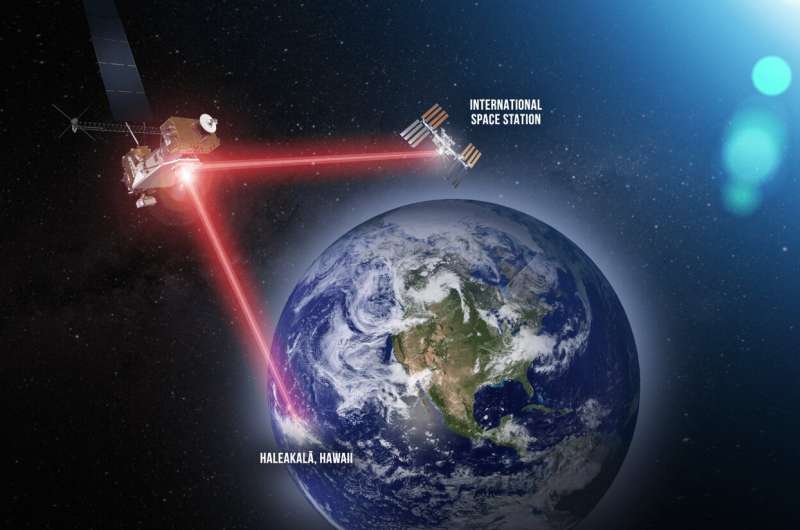
Our televisions and computer screens display news, movies, and shows in high-definition, allowing viewers a clear and vibrant experience. Fiber optic connections send laser light densely packed with data through cables to bring these experiences to users.
NASA and commercial aerospace companies are applying similar technologies to space communications, bringing optical speeds to the final frontier. Free-space optical communications leverages recent advancements in telecommunications to allow spacecraft to send high-resolution images and videos over laser links.
"Free-space" refers to the absence of the insulated, fiber optic cables that enable the terrestrial internet. Free-space laser communications flow freely through the vacuum of space, however atmosphere poses unique challenges to communications engineers.
NASA's Laser Communications Relay Demonstration (LCRD) will send data to and from ground stations and, eventually, in-space user missions over laser links.
"LCRD leverages the work done in the telecommunications industry for the past several decades. We're taking the concepts that they've created and applying them to space," said Russ Roder, product design lead for LCRD's optical module.
Science at the cusp: NASA rocket to study mysterious area above the North Pole
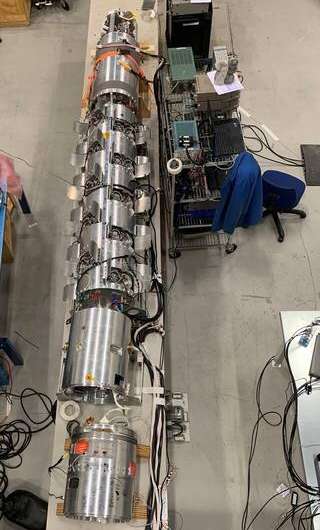
Strange things happen in Earth's atmosphere at high latitudes. Around local noon, when the Sun is at its highest point, a funnel-shaped gap in our planet's magnetic field passes overhead. Earth's magnetic field shields us from the solar wind, the stream of charged particles spewing off the Sun. The gap in that field, called the polar cusp, allows the solar wind a direct line of access to Earth's atmosphere.
Radio and GPS signals behave strangely when they travel through this part of the sky. In the last 20 years, scientists and spacecraft operators noticed something else unusual as spacecraft pass through this region: They slow down.
"At around 250 miles above Earth, spacecraft feel more drag, sort of like they've hit a speed bump," said Mark Conde, a physicist at the University of Alaska Fairbanks and the principal investigator for NASA's Cusp Region Experiment-2, or CREX-2, sounding rocket mission.
Galileo satellites placed on Soyuz launcher
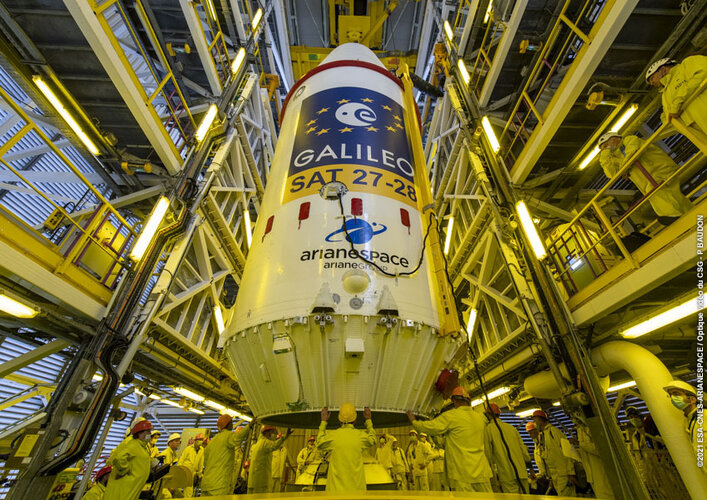 Image:
Galileo satellites placed on Soyuz launcher
Image:
Galileo satellites placed on Soyuz launcher Cosmic pearl
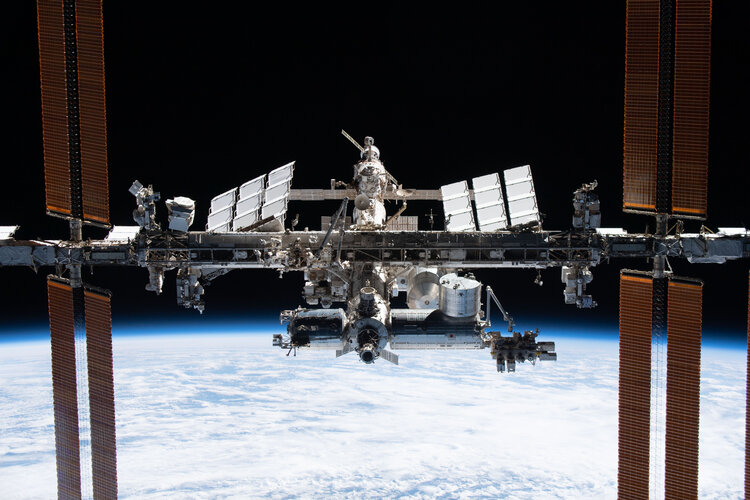 Image:
Image:
It can be hard to appreciate that a human-made, football-pitch-sized spacecraft is orbiting 400 km above our heads, but there it is.
The jewel of human cooperation and ingenuity that is the International Space Station shines brightly in this image captured by ESA astronaut Thomas Pesquet from the SpaceX Crew Dragon Endeavour.
Crew-2 got these amazing views during a flyaround of the orbiting lab after undocking from the Harmony module on 8 November, before their return to Earth.
Since this image was taken, there has even been a new addition in the form of the Russian Node Module, known as Prichal.
Solar Orbiter flies by Earth before beginning final journey to Sun
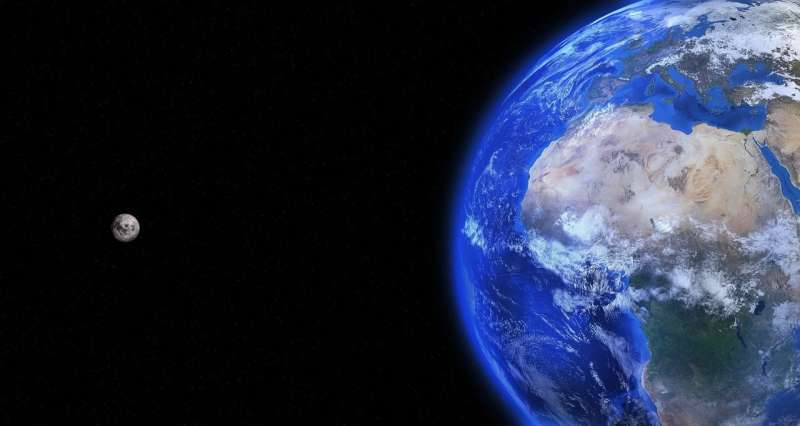
The Solar Orbiter space probe had a brief encounter with its home planet on Saturday morning when it circled the Earth for the first and last time while executing a gravity assist to slow itself down before setting off for the Sun.
Solar Orbiter launched in February 2020, and has already flown through the tail of a comet, flown by Venus and captured the most detailed photographs of the Sun ever taken.
On Saturday morning at 5.30 a.m. (CET) the spacecraft flew over the Earth at an altitude of 460 kilometers (285 miles), passing directly over North Africa and the Canary Islands.
According to the ESA, in order to execute the orbits the probe risked impact with the space debris the surrounds Earth. But according to Simon Plum, head of mission operations at the ESA control center in Darmstadt, the risk of collision was minimal.
In a worst case scenario of potential collision, he said, the probe could have initiated an evasive maneuver up to six hours before impact. However, Plum said, this had not been necessary and the orbiter was now on its way back into deep space.
Killer asteroids abound. NASA is ready to do something about it
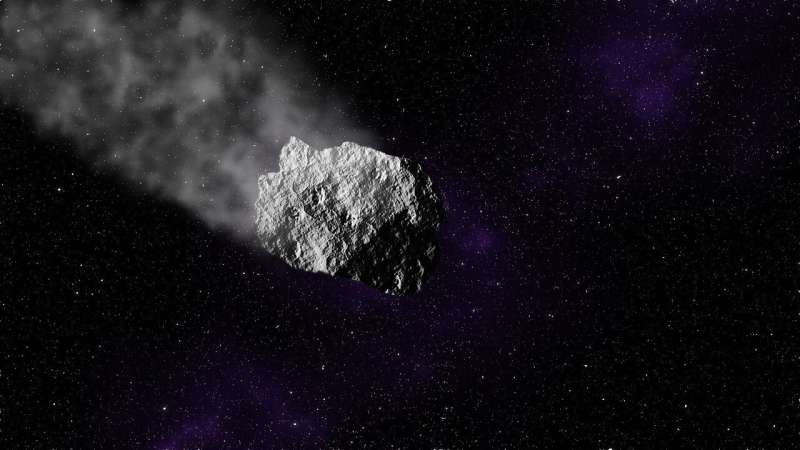
The Russia incident was a warning.
On a winter morning in 2013, a meteor the size of a four-story building screamed across the country, exploding near the city of Chelyabinsk and injuring more than 1,600 people amid widespread property damage.
The chunk of rock and iron, which was 60 feet across, served as a violent reminder that Earth, bombarded daily with tons of space-going debris, periodically intersects with large planet killers—and a significant portion of those remain undocumented.
After years of study and discussion, NASA has launched its first effort to spare Earth the kind of calamity that extinguished the dinosaurs, crashing a space probe into an asteroid to alter its speed and course. The Double Asteroid Redirection Test (DART) lifted off Nov. 23 local time aboard a SpaceX rocket from California and will cruise for 10 months to a binary asteroid system.
The idea is that if humans have adequate time to react—decades of notice being preferable—enough energy can be transferred into a speeding rock to alter its trajectory and make it miss Earth, avoiding catastrophe up to and including an extinction-level event.








